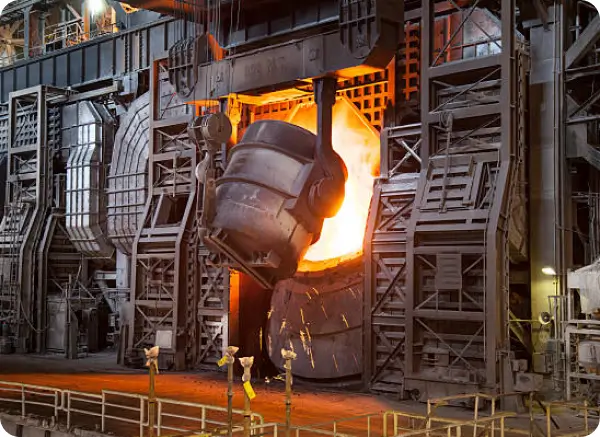Stainless Steel Desulfurization
Stainless Steel Desulfurization
The production of stainless steel involves several key stages: melting in an electric arc furnace (EAF), refining in an argon oxygen decarburization (AOD) converter, and further refining in a ladle furnace (LF). Removing sulphur and phosphorus is essential for high-purity stainless steel, typically achieving sulphur levels below 0.01%. Slag formation and optimization during secondary refining play a vital role in this process.
Sulphur and phosphorus degrade mechanical properties and corrosion resistance, so their removal is crucial. Effective desulphurization depends on optimizing slag characteristics:
- The production of stainless steel involves several key stages: melting in an electric arc furnace (EAF), refining in an argon oxygen decarburization (AOD) converter, and further refining in a ladle furnace (LF). Removing sulphur and phosphorus is essential for high-purity stainless steel, typically achieving sulphur levels below 0.01%. Slag formation and optimization during secondary refining play a vital role in this process.
- Sulphur and phosphorus degrade mechanical properties and corrosion resistance, so their removal is crucial. Effective desulphurization depends on optimizing slag characteristics:
- Lower slag viscosity and melting point improve contact between slag and molten steel, aiding sulphur and phosphorus transfer.
- Increasing slag basicity, usually with calcium oxide (CaO), helps form stable sulphide and phosphate compounds.
- A reducing slag environment during AOD and LF stages reduces oxygen activity, allowing sulphur levels to drop below 0.01%.
- Optimized slag reduces erosion of furnace linings and enhances process and equipment durability.
The desulfurization approach differs by refining stage:
- In EAF, an oxidizing environment promotes phosphorus removal with fluxes like AF-Series, limiting sulphur removal to avoid chromium loss.
- In AOD, initial oxidation removes carbon and phosphorus, then a reducing phase with AF-Series fluxes lowers sulphur below 0.01% through strong slag-metal reactions.
- In LF, a reducing environment and fluid, basic slags enhanced by AF-Series fluxes complete desulphurization and improve steel quality.
- Optimized slag protects molten steel from reoxidation, absorbs impurities, and traps inclusions. Controlling slag properties yields cleaner stainless steel, better mechanical strength, corrosion resistance, and protects refractory linings.
Optimized slag protects molten steel from reoxidation, absorbs impurities, and traps inclusions. Controlling slag properties yields cleaner stainless steel, better mechanical strength, corrosion resistance, and protects refractory linings.

Steel Slag Management
- Slag forms a floating layer that’s removed during refining. It contains fluxes (like lime), deoxidation products, remnants from ores, and wear from lining.
- Basicity, calculated as (CaO + MgO)/(SiO₂ + Al₂O₃), guides slag’s effectiveness for sulphur removal and lining protection.
Fluxing in Steel Making
- Fluxes (like CaO, MgO, sometimes CaF₂) help make slag more effective at pulling sulphur out by lowering its melting point and viscosity.
- A good slag is creamy and fluid—efficient for desulfurization and safe for the lining. Too hard or too fluid slags cause problems.
“Take care of your slag, the steel will take care of itself”—proper slag ensures better steel quality.